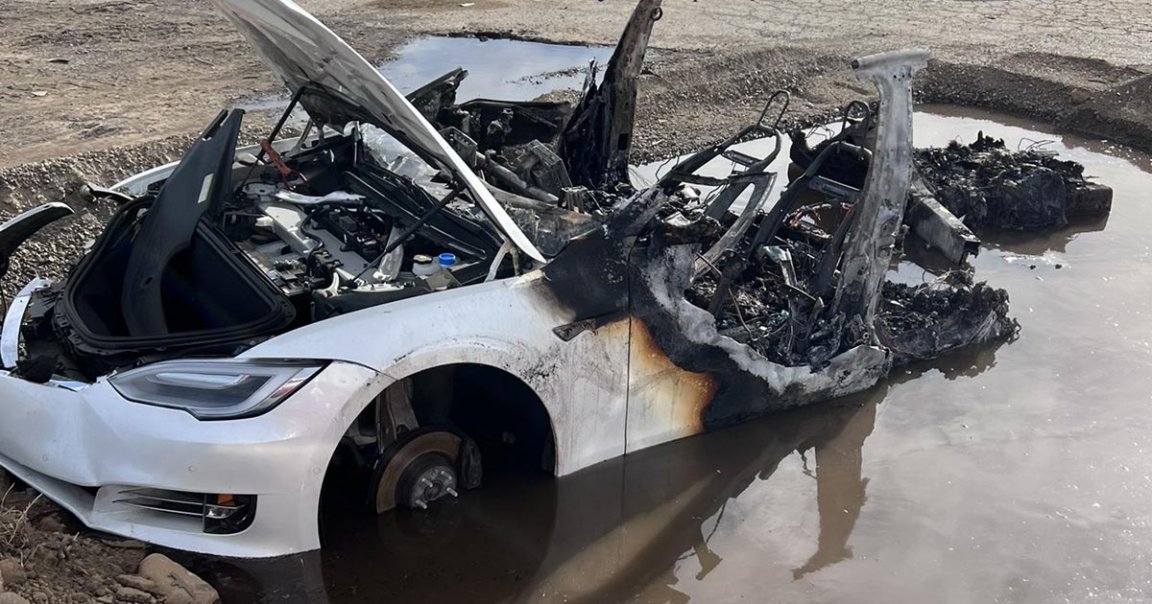
Putting out a Tesla fire once is one thing. Putting out a Tesla fire that kept reigniting three weeks after it was taken to the junkyard is another entirely.
As Sacramento’s KCRA reports, the Tesla blaze was a first for the city’s firefighting department, and a confusing first at that — both because water alone wouldn’t put out the battery fire, and because the car had been sitting in a junkyard for three weeks, which would random a conventional gas-powered automobile absolutely inert.
In a tweet that included video of the fire, the Sacramento Metro Fire District said that the Tesla was sitting in a junkyard when they were called to the scene, and although the department’s crews “knocked the fire down,” it kept on reigniting.
It took the firefighters “a significant amount of time, water, and thinking outside the box to extinguish,” the SMFD wrote in a Facebook post of the junkyard Tesla fire. With the help of scrap yard workers, they were able to flip the car over and begin trying to extinguish the fire from the battery compartment on its undercarriage. Still, they wrote, “even with direct penetration, the vehicle would still re-ignite due to the residual heat.”
For what it’s worth, that’s pretty much exactly what Tesla recommends that first responders do when one of its vehicles catches on fire. The fact that it was still a news-making issue underlines a touchy issue with electric vehicle popularization: that it’s great environmentally to get them on the roads, but that same popularity is going to create new challenges for emergency personnel.
They were finally able to fully extinguish the fire after the firefighters and junkyard workers “created a small pit, placed the car inside it, and filled the pit with water,” which submerged the battery compartment, the SMFD’s Facebook post noted.
Though this is a particularly egregious example, electric vehicle battery fires are far from a new phenomenon.
In 2019, at least three parked Teslas that caught fire within a month’s time. And that’s without getting into the many Teslas that catch fire while charging.
The next year, Insider revealed that Tesla knowingly sold cars with faulty batteries as a cost-cutting measure. That’s particularly significant because the aluminum used on those corner-cut Model S vehicles is both particularly susceptible to cracking, so when the aluminum cracked and coolant began spilling into the lithium ion battery packs, it would eat away at the cars’ batteries and sometimes explode.
While we don’t know for sure what year or model the Tesla in the Sacramento junkyard fire was, it’s nevertheless alarming that this is still happening two years after it was revealed that the company knowingly sold cars with flammable batteries — and a bad omen for the future of these cars that sometimes just explode for no reason.
READ MORE: Watch: Sacramento firefighters fight their first Tesla fire that kept reigniting [KCRA]
More on crazy fires: Lawsuit Claims That 3D Printer Caught Fire and Killed a Man